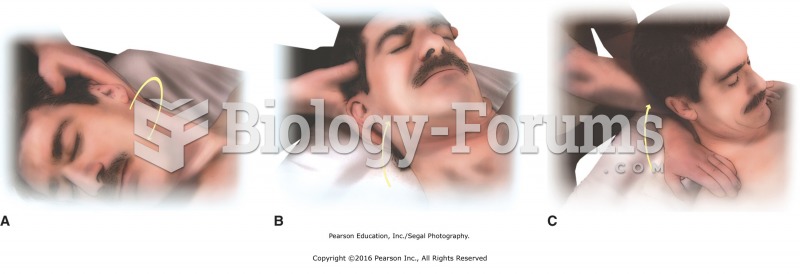|
|
|
According to the FDA, adverse drug events harmed or killed approximately 1,200,000 people in the United States in the year 2015.
The horizontal fraction bar was introduced by the Arabs.
The use of salicylates dates back 2,500 years to Hippocrates's recommendation of willow bark (from which a salicylate is derived) as an aid to the pains of childbirth. However, overdosage of salicylates can harm body fluids, electrolytes, the CNS, the GI tract, the ears, the lungs, the blood, the liver, and the kidneys and cause coma or death.
The first-known contraceptive was crocodile dung, used in Egypt in 2000 BC. Condoms were also reportedly used, made of animal bladders or intestines.
Bacteria have been found alive in a lake buried one half mile under ice in Antarctica.
 Hold hand around thumb and little finger and apply broadening strokes across the metacarpals. Press ...
Hold hand around thumb and little finger and apply broadening strokes across the metacarpals. Press ...
 Press into points along the neck with your thumb, one side at a time. Apply circular friction to ...
Press into points along the neck with your thumb, one side at a time. Apply circular friction to ...





